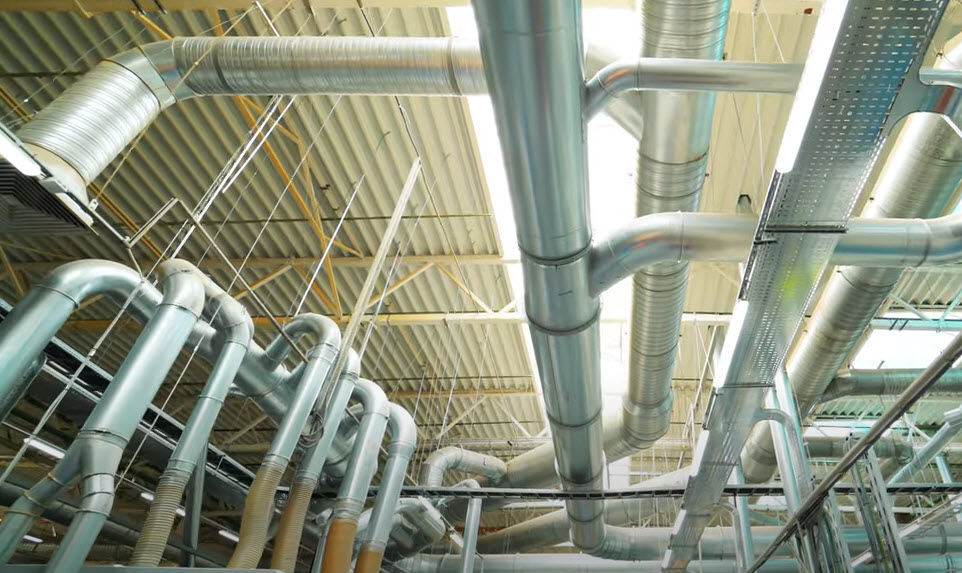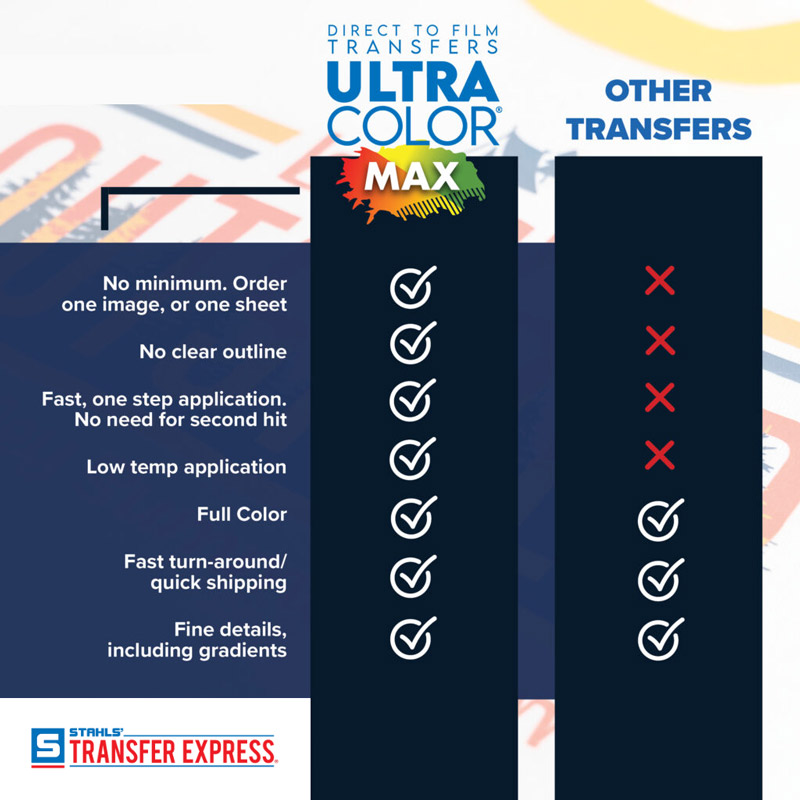The Truth About Direct to Film Printers and Transfers
Using a direct to film printer or transfers are one of the newest printing methods for apparel decorating.
DTF (direct to film) is currently a huge buzzword in the apparel decorating industry. It’s changing full color transfers and printing.
But should decorators run out and buy a direct to film printer just yet?
Let’s hold on a second and dive into the awesome capabilities of DTF prints while also talking about some of the aspects of the equipment, and the entire DTF process itself, that no one else is going to talk about before you buy a printer.
Should You Buy a Direct to Film Printer?
Like we said above, DTF transfers are a great way to decorate apparel with full color printing.
They apply on many fabrics and colors, which give you plenty of options compared to direct to garment (DTG) printing, which limits you to cotton, or how sublimation limits you to just polyester or poly dominant blends.
There are no clear outlines on these transfers, and they have a lightweight soft-hand feel to the touch.
They’re capable of vibrant colors, great durability and opacity.
However, all of those depend on the equipment used and the experience you have with the equipment.

Operating a DTF printer is not just a “plug and play” type of printer.
Here at Transfer Express, it took over a year of developing our UltraColor Max DTF transfers before we released them for our customers. And that’s with dedicated and knowledgeable staff who have experience working with printers, inks, carriers, and the software.
Just like when direct to garment printers became widely available a decade or so ago, there was a huge rush to go out and buy the equipment and supplies. But in the long run, it didn’t pay off for many small businesses.
Now that we’ve been working with DTF transfers and have a lot of experience under our belt, we wanted to explain some of the challenges this cool technology brings and what we’ve learned. We hope it helps you make a good decision and saves you from plenty of headaches down the road.
So let’s take a look at some of the top things you need to consider when thinking about DTF printers and printing your own transfers.
Printing Environment Needed for DTF
The first thing we want to talk about for DTF printers is your space setup.
The main thing that’s going to make a huge difference in the quality of DTF prints is the environment and climate of the room where your printer and curing unit will live.
We’re talking both temperature and humidity. Without the right controlled environment, you’re going to run into print quality issues like banding in your prints. Banding looks like an old inkjet printer you used to have at home when it was running out of ink. You get a whole bunch of lines in your art and it just doesn’t look professional.
When that starts happening, it’s most likely due to ink drying and clogging in the actual print heads of the unit, which is going to lead to time spent troubleshooting and cleaning, and then even possible replacement parts.
That’s no fun when you’re just trying to print t-shirts.
Not only will you need a climate controlled space, but you’ll also need a proper ventilation system installed. There are health hazards you’re going to introduce into your workspace with these printers.
Curing adhesives can produce harmful chemicals, so for larger shops with proper ventilation systems, this might not be a huge issue if you are already set up.

But for small home-based businesses or t-shirt brands, say running out of a garage, this could lead to expensive and loud vent systems to keep the hazards to a minimum, not to mention exposing others to this stuff, too.
Even small desktop units may require proper ventilation or personal protective equipment for your health safety. It’s always something to keep in mind.
Maintenance of DTF Printers
It’s important to factor in maintenance to operating costs and time when you’re looking at the investment of a DTF unit.
Since direct to film is so new, the oldest, most reliable machines are not even 18 months old. That’s not a lot of time to put into real world use testing for a machine that may take many years to pay off for you and your business.
With new technology, and specifically in this post-Covid supply chain, comes a flood of low quality print heads, circuit boards, and unreliable parts.

With maintenance comes down time, too. That’s something that you’re going to have to factor in. That means not being able to produce t-shirts while you’re working on the machine or waiting on replacement parts to arrive.
You’ll then need to scramble for those last-minute orders and get them fulfilled, which often times, means outsourcing.
Raw Materials
To print DTF transfers, you’ll be buying adhesives, inks, and the film carrier.
These are not all the same, so you’ll need to do your research on finding which ones work best for you and give you the quality that you want to provide for your customers.
Depending on the different materials, it will also change your transfer application ability – there’s hot peel DTF, as well as cold peel. There’s also high temperature and low temperature adhesives.
These will all factor into what you can apply your DTF transfers to. Without that lower temperature application, you may be finding that although it could print on polyester and cotton and everything in between, you might be limited to just cotton garments to avoid scorching the materials.
Besides finding the best raw materials that work for you, take caution that you may be plagued by inconsistencies in the raw materials that you’re purchasing. Bad batches of adhesives, films, and even inks have been present. This can lead to expensive waste, not just in time, but if you can’t return the product, it’s money down the drain, too.
Color Management
Let’s talk about color.
Not only do the quality of inks determine your color fidelity, but the environment factors into it, too.
It also takes a lot of experience tuning the machines and the software to get it just right.
Color profiles are always a challenge and these are all things you may not have experience with or have time for, as a busy small business owner, wearing many different hats.
Electrical
Another point to mention here with foreign made parts and electrical components is the UL and CE ratings on those electrical components.
These ratings ensure proper testing has been done to ensure the machines meet certain safety standards specific to the region that you live in, whether the US, North America, or even Europe.
Please check on any equipment before you buy and check your insurance policy. Some require UL listings for all major appliances while some don’t specify.
What’s Best for My T-Shirt Business?
There’s a lot that goes into an entire direct to film printer setup.
Essentially, one does not simply purchase a direct to film printer and get quality results right out of the gate. Regardless of what the manufacturer is promising you, there’s going to be a learning curve.
While DTF printers may look good in videos on the internet, making an investment like that to your business may not make much sense financially. Profit is the name of the game here, right?
Maybe when machine development catches up with reliable parts and a fully stocked supply chain, it may be more viable for small creators, but you shouldn’t be rushing to integrate production in-house anytime soon for your t-shirt business.
So what do we recommend instead?
Ordering custom transfers when you need them is definitely the way to go for the majority of t-shirt businesses.
[Related Content: Direct to Film Heat Transfers UltraColor Max]
Direct to Film Heat Transfers – UltraColor Max
Here at Transfer Express, we’ve spent years of research and development to bring the highest quality DTF transfers to market.
That, coupled with a skilled maintenance team, to ensure quality transfers in every box that leaves the shop.

You should absolutely try custom printed DTF transfers before you decide to take a leap in the huge expense and hassle of running your own printer setup at home or in your business.
Just like with screen printed transfers, we take all the hassle out of the equipment, inks, clean up, etc. Then you can just focus on pressing, peeling your transfers, and profiting.
Instead of the hassle of printing the transfers, and then pressing them, you get the DTF transfers ready to press.

With turn times at just one business day, UltraColor Max transfers ship the day after you order it, with cutoff times all the way up to midnight!
So when you order UltraColor Max DTF transfers before midnight, they will ship the very next business day. That is quick enough for 99.9% of t-shirt jobs.
[Related Content: UltraColor Max – Fast Turn Times with No Minimums]
Shipping transit times are also a max of 2 days with our exclusive Speedy Air delivery. If you are outside 2 day ground, we’ll upgrade you to 2 day air for the same flat rate price as ground.
Another great benefit of UltraColor Max is that there are no minimums. So you could order as few as just one piece when needed.
UltraColor Max is priced by the square inch, at just $0.06 each. This makes it super affordable and very profitable, especially for those smaller orders.
So go ahead, try these UltraColor Max transfers for yourself. Compare it to any other direct to film out there, not only in quality, but durability, too.
Samples are included in your welcome pack when you just sign up for a free account at transferexpress.com. Or, they’re always available for free here.
